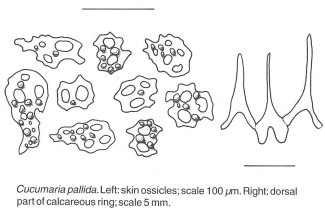E-Fauna BC: Electronic Atlas of the Wildlife of British Columbia
Cucumaria pallida Kirkendale and Lambert, 1995
Pale Sea Cucumber Family: Cucumariidae Extracted from Sea Cucumbers of British Columbia, Southeast Alaska and Puget Sound by Philip Lambert.
|
|||||||||||||||||||||||||||
